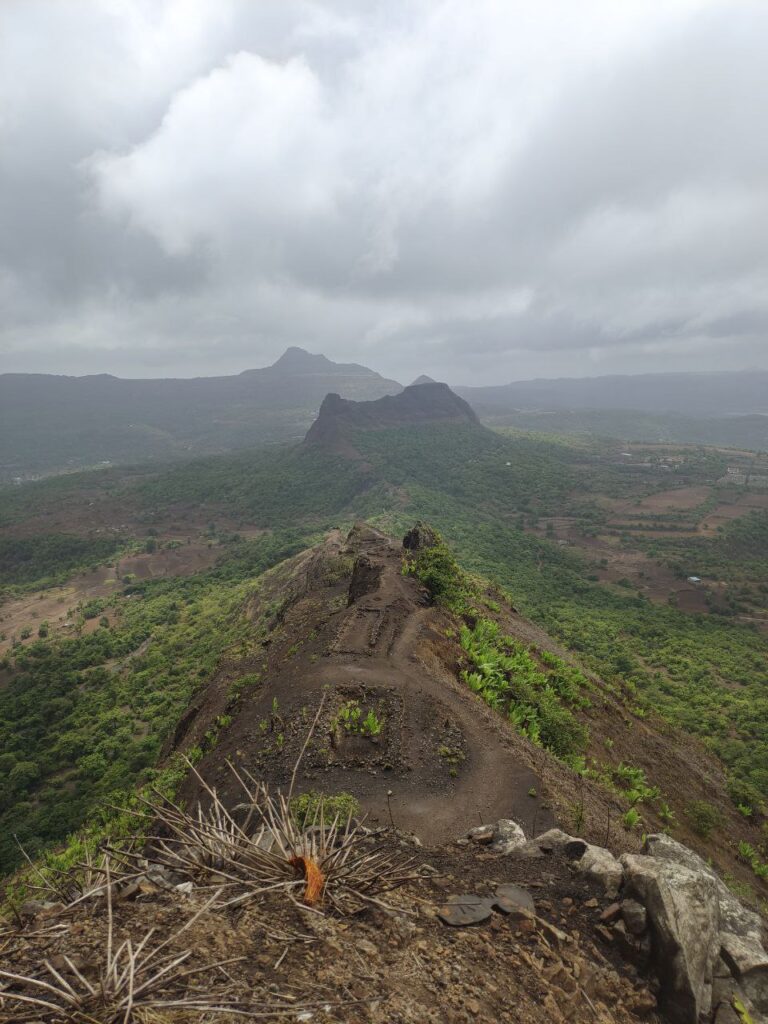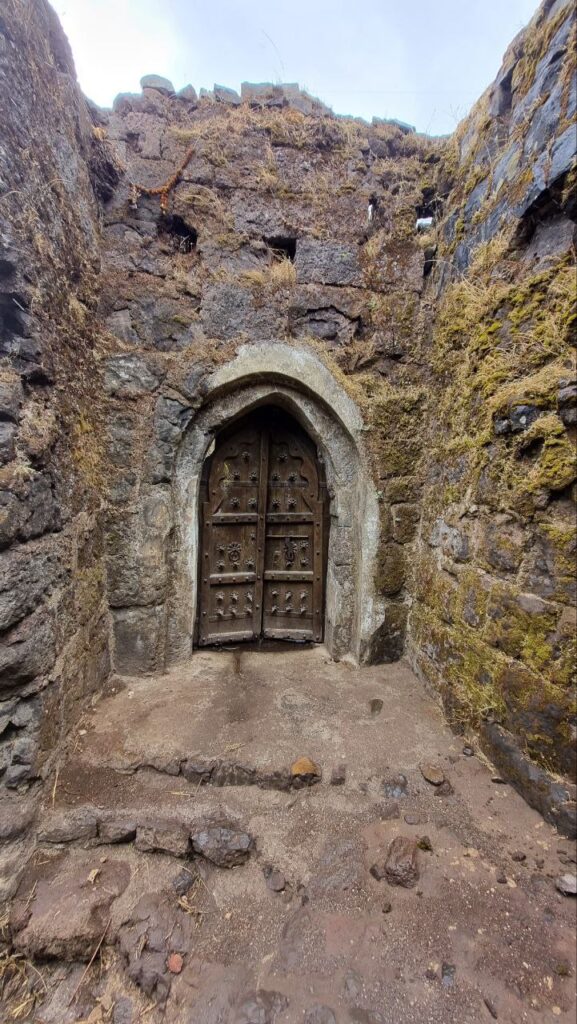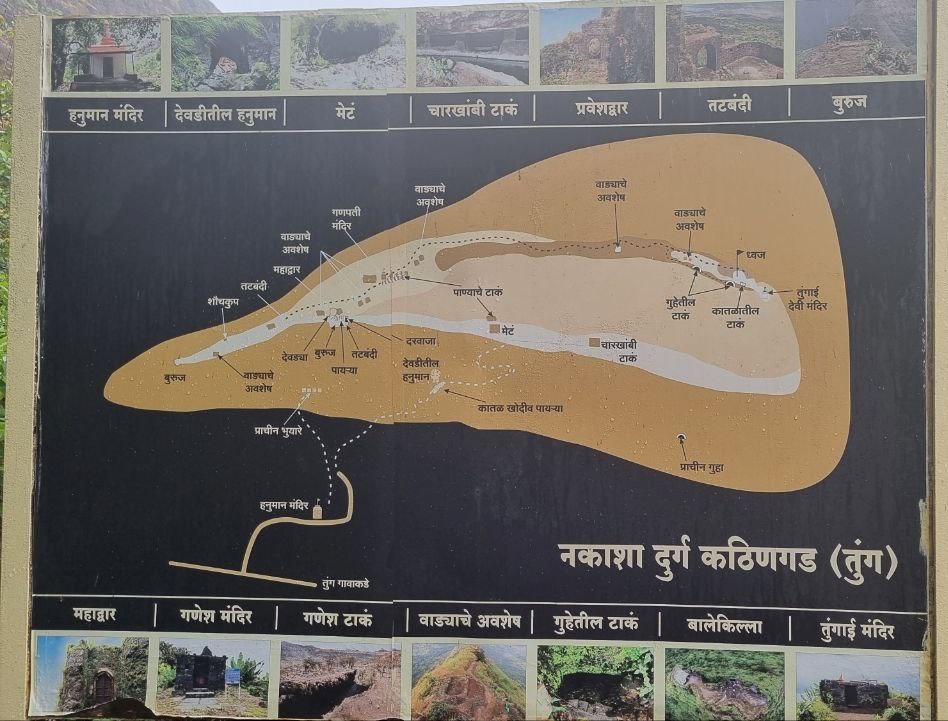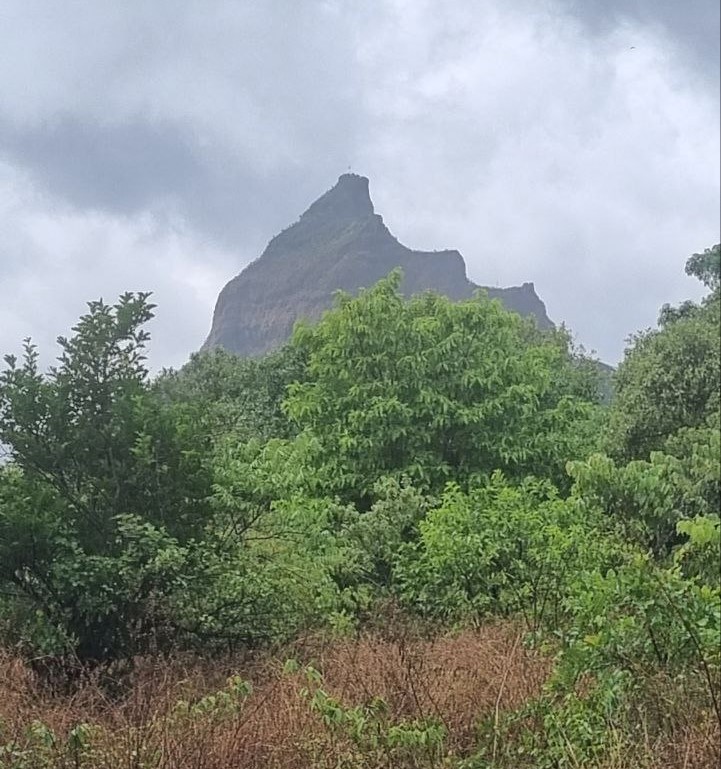Tung Fort, also known as Kathingad Fort, is a historical fortification located in the Pune district of Maharashtra, India. It is situated at an elevation of around 1,075 meters (3,527 feet) above sea level in the Sahyadri Mountain Range of the Western Ghats. Tung Fort is known for its strategic location and panoramic views of the surrounding valleys and hills.
The fort has a rich history that dates back to the 12th century. It was initially built by the Shaiva Panth, but the exact year of construction is uncertain. Over the centuries, it changed hands several times and was occupied by various dynasties, including the Bahmani Sultanate, the Mughals, and the Marathas.
Tung Fort played a significant role in the region’s defense due to its strategic location. It served as a watchtower to keep a watch over the Pawna Maval region and the trade route that passed through it. The fort also offered protection to the nearby forts of Lohagad and Visapur.
The architecture of Tung Fort exhibits a blend of ancient Indian military engineering techniques. The fortification is built on a massive rocky hill with steep slopes, making it a formidable structure. It features a robust stone wall, bastions, and a gateway that guarded the entrance. Inside the fort, you can find remnants of buildings, water tanks, and a few cannons.
Chhatrapati Shivaji Maharaj, the revered Maratha warrior-king of the 17th century, played a pivotal role in capturing and fortifying Tung Fort as part of his strategic military campaigns. Recognizing the significance of forts in defense and control over territories, Shivaji Maharaj embarked on a mission to secure numerous forts across Maharashtra. Tung Fort, with its strategic location and trade route surveillance capabilities, was among the forts fortified under his rule. The fort’s robust defenses, including bastions, ramparts, and gates, stood as a testament to Shivaji Maharaj’s military acumen. Tung Fort, along with other fortified strongholds, formed a critical part of Shivaji Maharaj’s vision of establishing the Maratha Empire and left an indelible mark on the history of Maharashtra.
Trekking enthusiasts and history lovers visit Tung Fort to explore its historical significance and enjoy the scenic beauty of the surroundings. The trek to Tung Fort is moderately challenging, with a trail that passes through lush green forests and rocky terrains. The trek offers breathtaking views of the Sahyadri mountain range, Pawna Lake, and the nearby forts.
Due to its proximity to Pune and Mumbai, Tung Fort has become a popular weekend getaway for adventure seekers and nature enthusiasts. The best time to visit is during the monsoon season (June to September) when the surroundings are covered in lush greenery and the weather is pleasant.
Exploring Tung Fort allows visitors to immerse themselves in history while enjoying the beauty of nature. It is a testament to the architectural prowess of the bygone eras and offers a memorable experience for those who seek adventure and historical insights.

Information about Tung Fort:
- Architecture and Structures:
Tung Fort is known for its unique architecture and structures. The fort has a triangular shape with a wide base and a narrow top. It is built using locally available stones and rocks, showcasing the ingenuity of ancient Indian architects. The fortification includes bastions, a parapet wall, and a series of gates that acted as defensive measures. Inside the fort, you can find remnants of buildings that were used as barracks, storage spaces, and administrative areas. There are also water tanks that served as a source of water for the occupants.
- Trekking Routes:
There are two main trekking routes to reach Tung Fort. One starts from the village of Tungi, which is located at the base of the fort. This route is relatively easier and takes approximately 1.5 to 2 hours to reach the top. The other route starts from the village of Pawna Nagar and is slightly more challenging, taking around 2.5 to 3 hours to complete. Both routes offer scenic views and are popular among adventure enthusiasts.
- Historical Significance:
Tung Fort has witnessed several historical events and has changed hands multiple times. It played a crucial role during the rule of various dynasties in Maharashtra. The fort was occupied by the Bahmani Sultanate in the 14th century, followed by the Mughals in the 17th century. Later, it came under the control of the Marathas, specifically the Peshwas. The fort’s strategic location made it an important stronghold for controlling trade routes and keeping a watch on neighboring territories. - Nearby Attractions:
Tung Fort is located in close proximity to other popular forts in the region, such as Lohagad Fort and Visapur Fort. These forts, along with Tung Fort, form a popular trekking circuit for outdoor enthusiasts. Pawna Lake, a picturesque reservoir, is also nearby and offers opportunities for camping and water sports. - Weather and Best Time to Visit:
The weather at Tung Fort is pleasant throughout the year, but the best time to visit is during the monsoon season (June to September). The surrounding hills and valleys come alive with lush greenery, and the water bodies are replenished, offering a captivating landscape. However, it is advisable to check weather conditions before planning a trek during the monsoon, as heavy rainfall can make the trails slippery and unsafe.
- Panoramic Views:
Tung Fort offers breathtaking panoramic views of the Sahyadri mountain range and the surrounding valleys. From the top of the fort, you can witness the undulating hills covered in lush greenery, creating a picturesque landscape. The vantage points on the fort provide stunning vistas of the Pawna Lake and the villages dotting the region. The beauty of the natural surroundings is further enhanced during the monsoon season when the hills come alive with cascading waterfalls and misty clouds. - Lush Greenery:
The trek to Tung Fort takes you through dense forests that are rich in biodiversity. The route is flanked by trees, bushes, and various plant species, creating a verdant environment. During the monsoon season, the forests transform into a vibrant green paradise as the vegetation thrives with ample rainfall. The fresh air, the soothing sounds of nature, and the vibrant hues of the flora make the trek a refreshing and rejuvenating experience. - Pawna Lake:
Tung Fort is located in close proximity to Pawna Lake, a beautiful reservoir that adds to the natural charm of the region. The lake is surrounded by rolling hills and provides a serene setting. Visitors can enjoy boating or simply relax by the lakeside, taking in the tranquility and scenic views. The sight of the lake against the backdrop of the towering hills creates a picturesque scene that is perfect for photography enthusiasts. - Flora and Fauna:
The Sahyadri mountain range, including the region around Tung Fort, is home to a diverse range of flora and fauna. The forests surrounding the fort are inhabited by various species of trees, including teak, bamboo, and banyan. Wildlife enthusiasts may spot birds like peafowls, bulbuls, and sunbirds, as well as small mammals and reptiles along the trekking route. - Sunrise and Sunset:
Tung Fort offers excellent opportunities to witness mesmerizing sunrises and sunsets. Watching the sun rise from behind the mountains or witnessing the golden hues spread across the horizon during sunset is a magical experience. The changing colors of the sky, coupled with the scenic vistas, create a serene and awe-inspiring atmosphere that captivates visitors.

Information on Trek to Tung Fort
- Trek Difficulty:
The trek to Tung Fort is considered moderately easy, suitable for beginners as well as experienced trekkers. The trek involves a combination of uphill and downhill trails, rocky terrain, and some steep sections. It requires a moderate level of fitness and endurance. However, with proper preparation and caution, it can be accomplished by most individuals. - Trekking Routes:
There are two main trekking routes to reach Tung Fort:- Tungi Route:
This is the more popular and commonly used route. The trek starts from the village of Tungi, located at the base of the fort. The trail initially passes through a series of steps and gradually ascends through a dense forest. The path is well-marked and relatively straightforward. It takes approximately 1 to 2 hours to reach the top. - Pawna Nagar Route:
This route starts from the village of Pawna Nagar. The trail is slightly longer and more challenging compared to the Tungi route. It involves steeper sections and rocky terrain. The route offers a different perspective of the fort and provides diverse views of the surrounding landscape. It takes approximately 2 to 3 hours to reach the top.
- Tungi Route:
- Best Time to Trek:
The best time to trek to Tung Fort is during the monsoon season (June to September) and the post-monsoon season (October to February). During these months, the weather is pleasant, and the surroundings are lush green with beautiful waterfalls. The temperature remains cool, making the trek enjoyable. However, it’s advisable to check weather conditions and be cautious during heavy rainfall as it can make the trail slippery and challenging. - Trekking Tips:
Wear comfortable and sturdy trekking shoes with good grip to navigate the rocky terrain.
Carry sufficient water to stay hydrated throughout the trek.
Pack light but essential items such as snacks, sunscreen, a hat, insect repellent, and a raincoat.
Start the trek early in the morning to avoid trekking in harsh sunlight and to enjoy the views.
Respect the environment and carry back all waste generated during the trek - Camping is not allowed on the fort itself, but there are camping sites available in the vicinity of Tung Fort. Pawna Lake, located nearby, offers camping options where you can enjoy the tranquility of the surroundings and spend a night under the starry sky.

